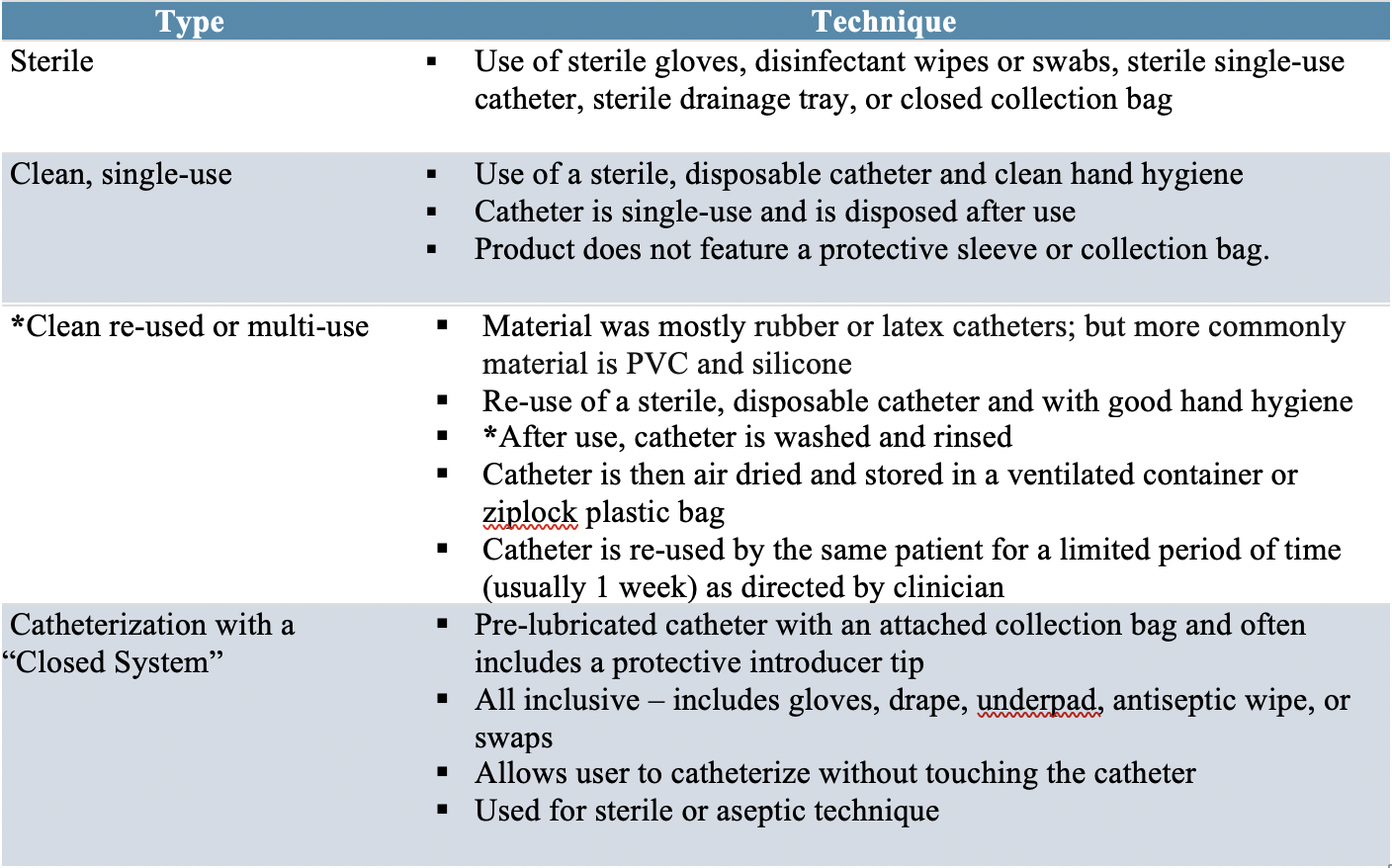Techniques & Procedures for Use

* Manufacturer guidelines state that a catheter designed for intermittent drainage of the bladder is single-use and is to be disposed after its catheterization. There is no multiuse catheter with US Food and Drug Administration approval commercially available. According to the FDA, single-use devices that cannot be reprocessed safely should not be reused under any circumstances (www.fda.gov/regulatory-information/search- fda-guidance-documents/reprocessing-and-reuse-single- use-devices). Thus, reuse of catheters is outside their intended use, which cannot be recommended and is not reimbursed by health insurance companies.
On April 1st, 2008, Medicare changed its reimbursement policy on intermittent catheterization. The previous policy only allowed reimbursement for one intermittent catheter per week (4 per month), unless the individual user had lab results or medical documentation stating the existence of at least 2 urinary tract infections (UTIs) in the course of one calendar year. This new policy now allows reimbursement for up to 200 intermittent catheters per month per individual.
This change allows for up to 6 catheter changes a day in hopes to stop re-use of FDA labeled "single-use" catheters. The old policy made individuals sterilize and clean their catheters any way they knew how which lets a very high-risk opportunity to have the individual get infected with catheter-associated bacteria to arise. No longer will catheter users suffer from severely painful UTIs.
According to Lapides definition of CIC, a clean technique is used, including both disposable and cleaned reusable catheters. The literature on differences in safety and efficacy between single- and multiuse catheters is conflicting and comprises a low level of evidence. There is also not evidence or consensus on the most efficient method for cleaning catheters. According to Hakansson (2014) different cleaning techniques to lower the risk of microbial contamination have not been studied and this diversity makes the available data even less generalizable. Also, there is a no guidance on the frequency, length, and appropriate storage for catheter reuse and there may be health hazards due to catheter damage from reusing and sterilization.
March 2021
© 2021 Digital Science Press, Inc. and UroToday.com


